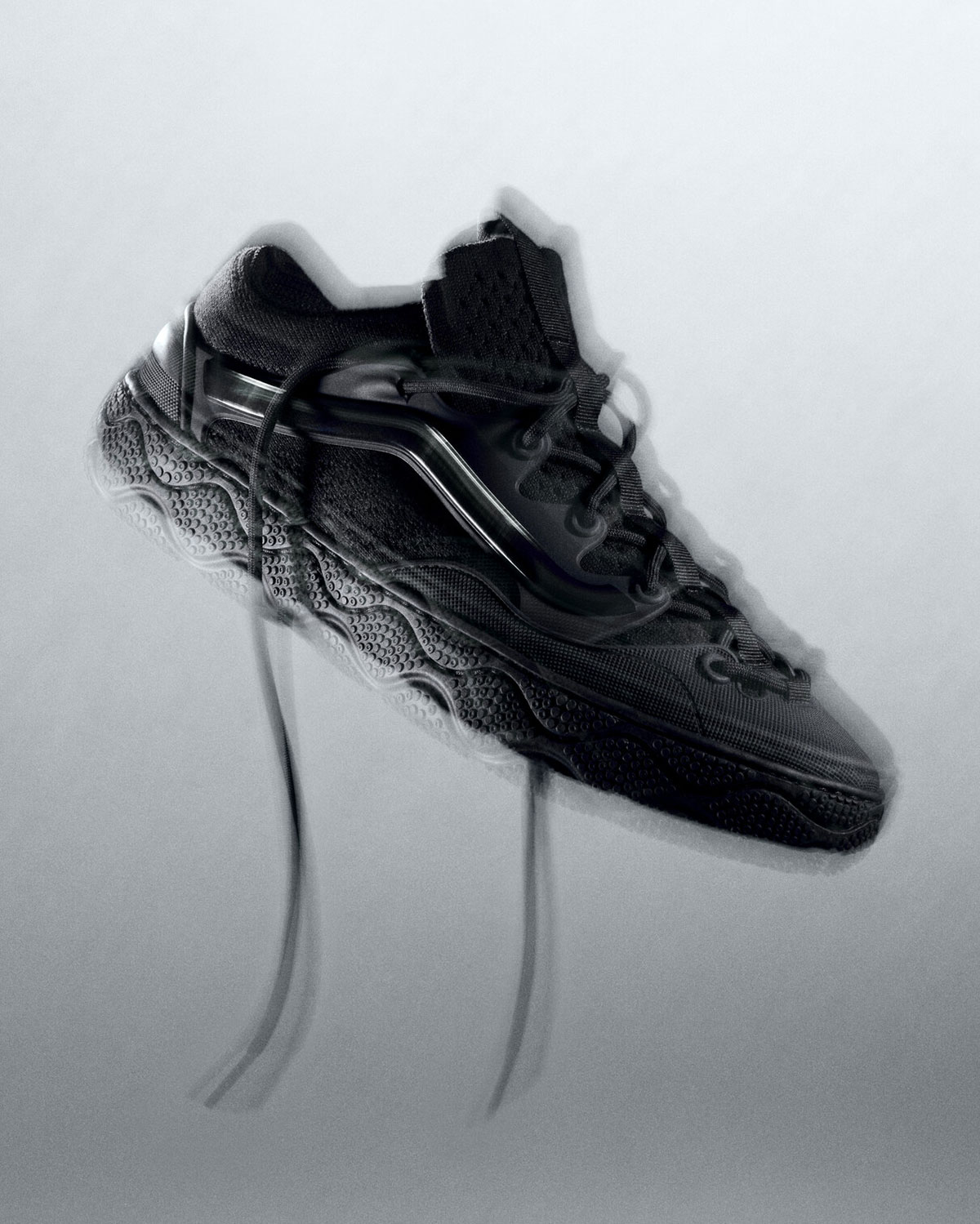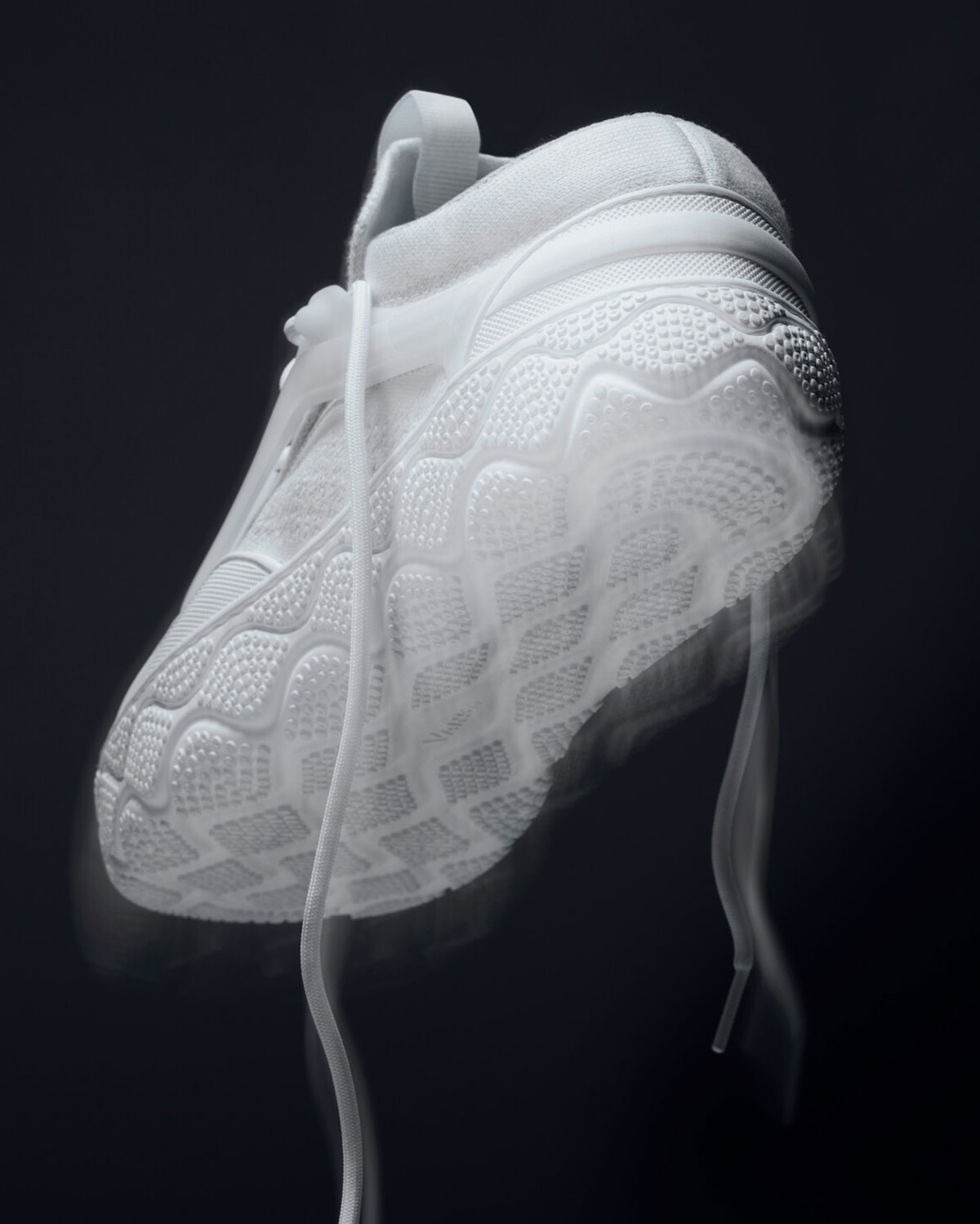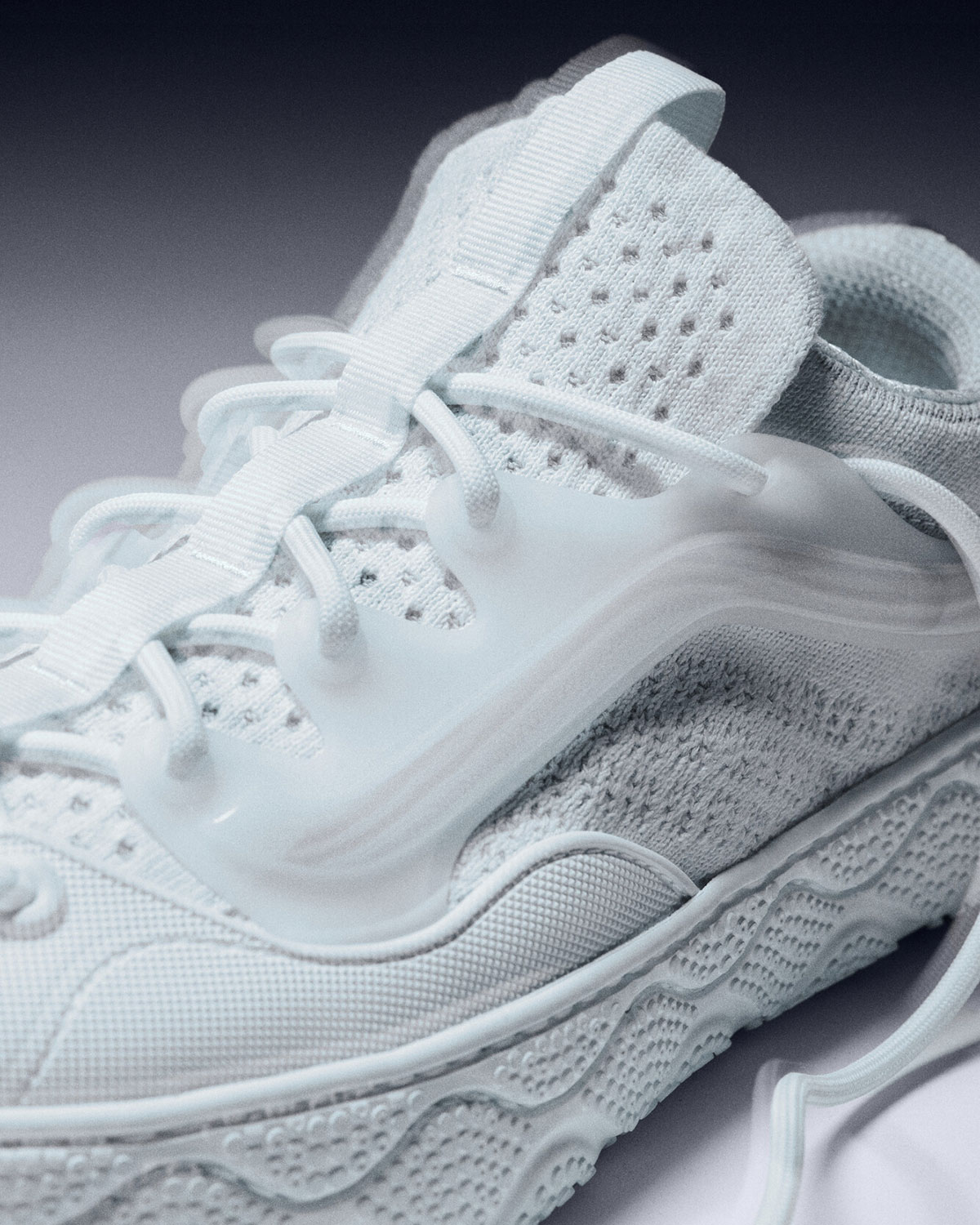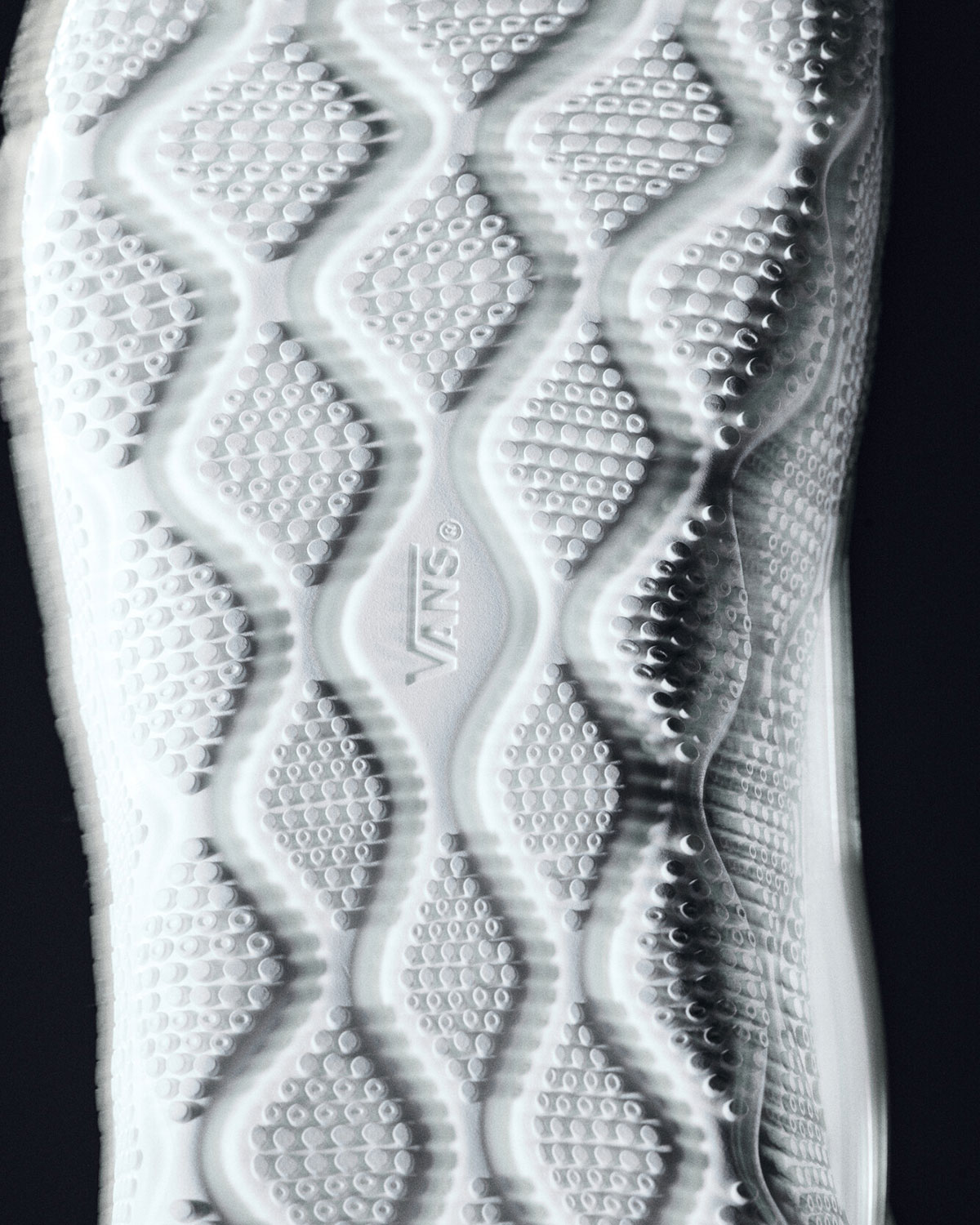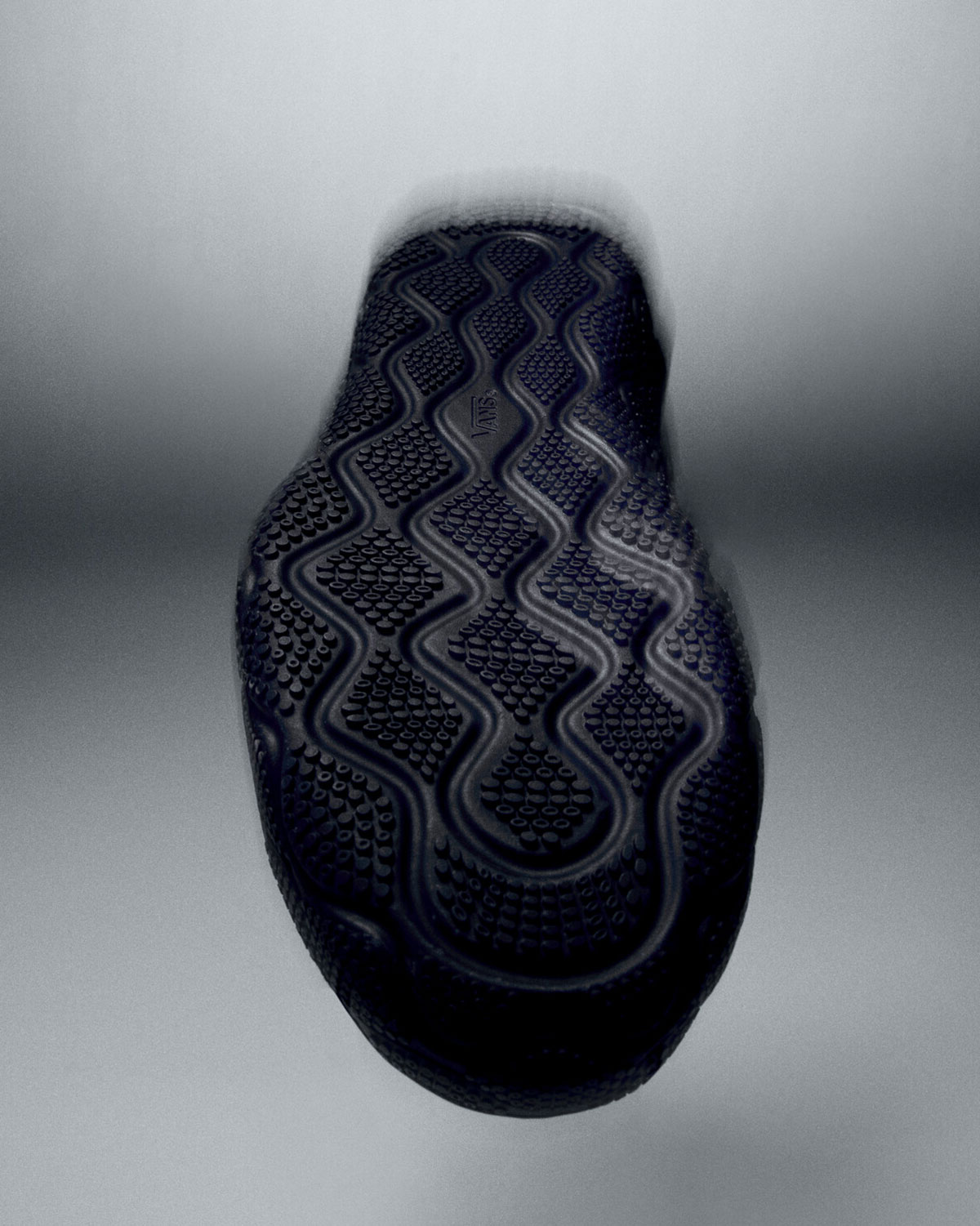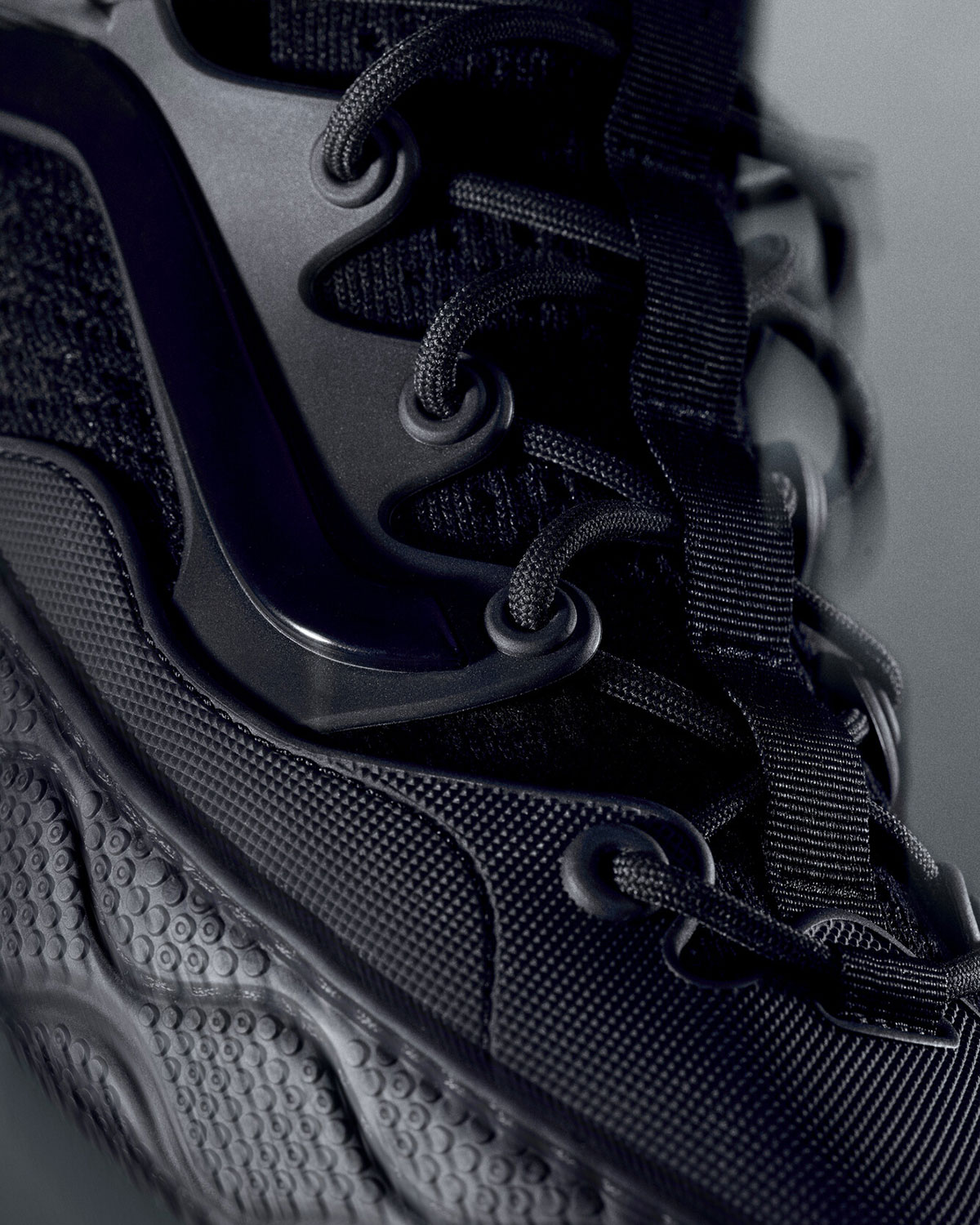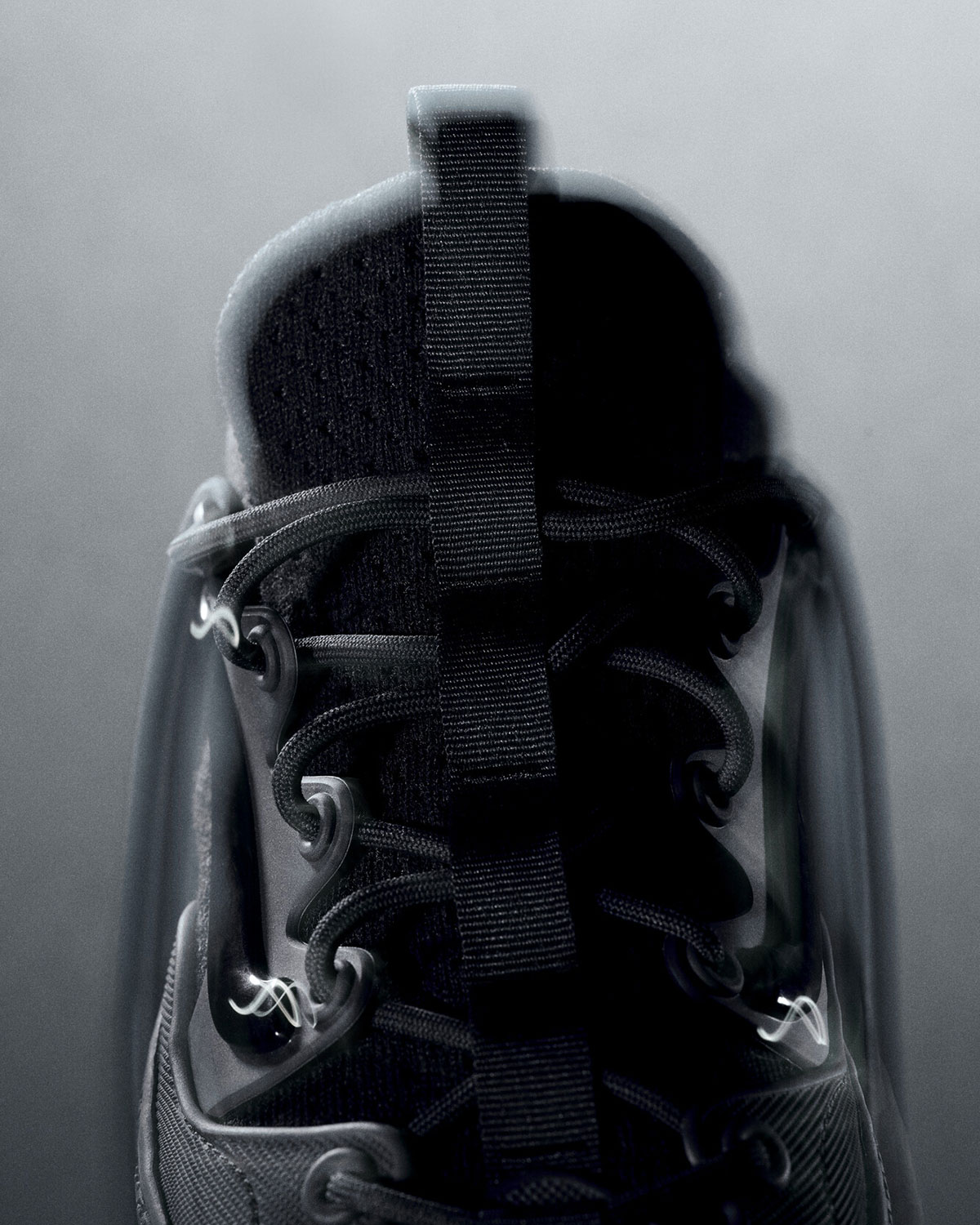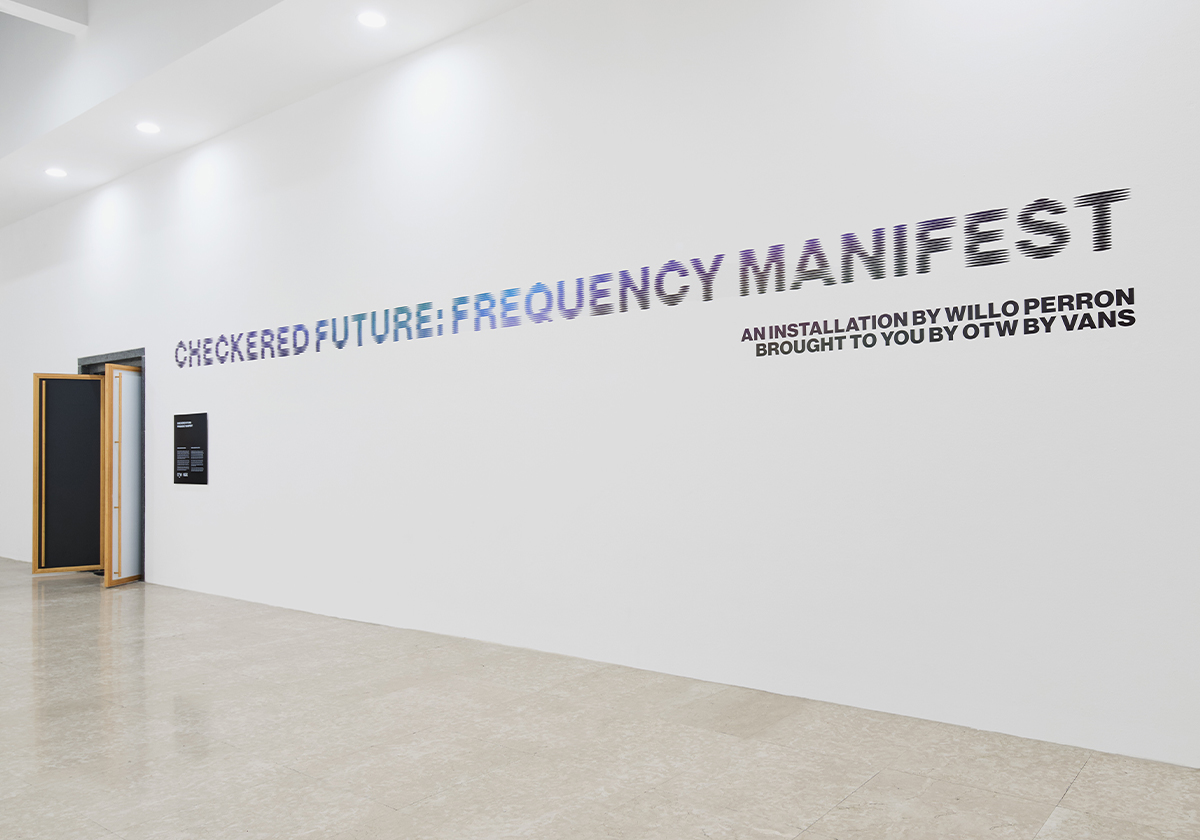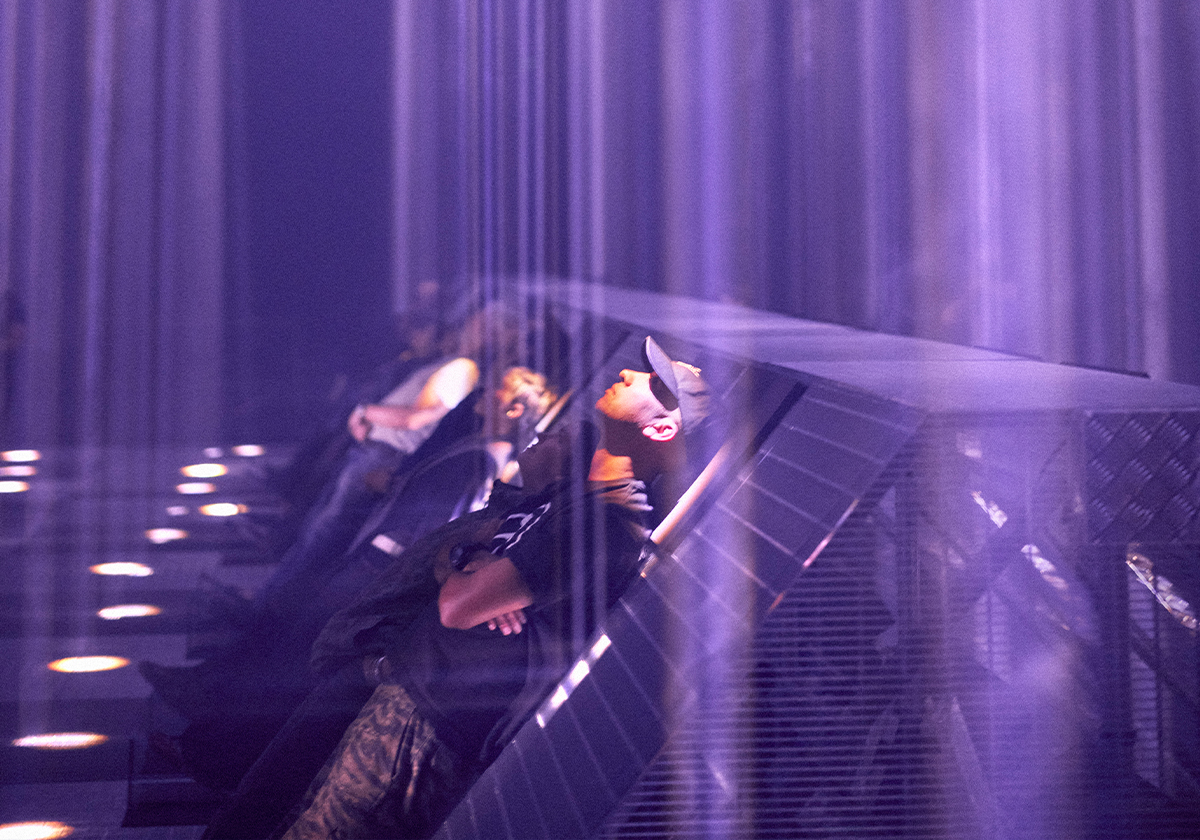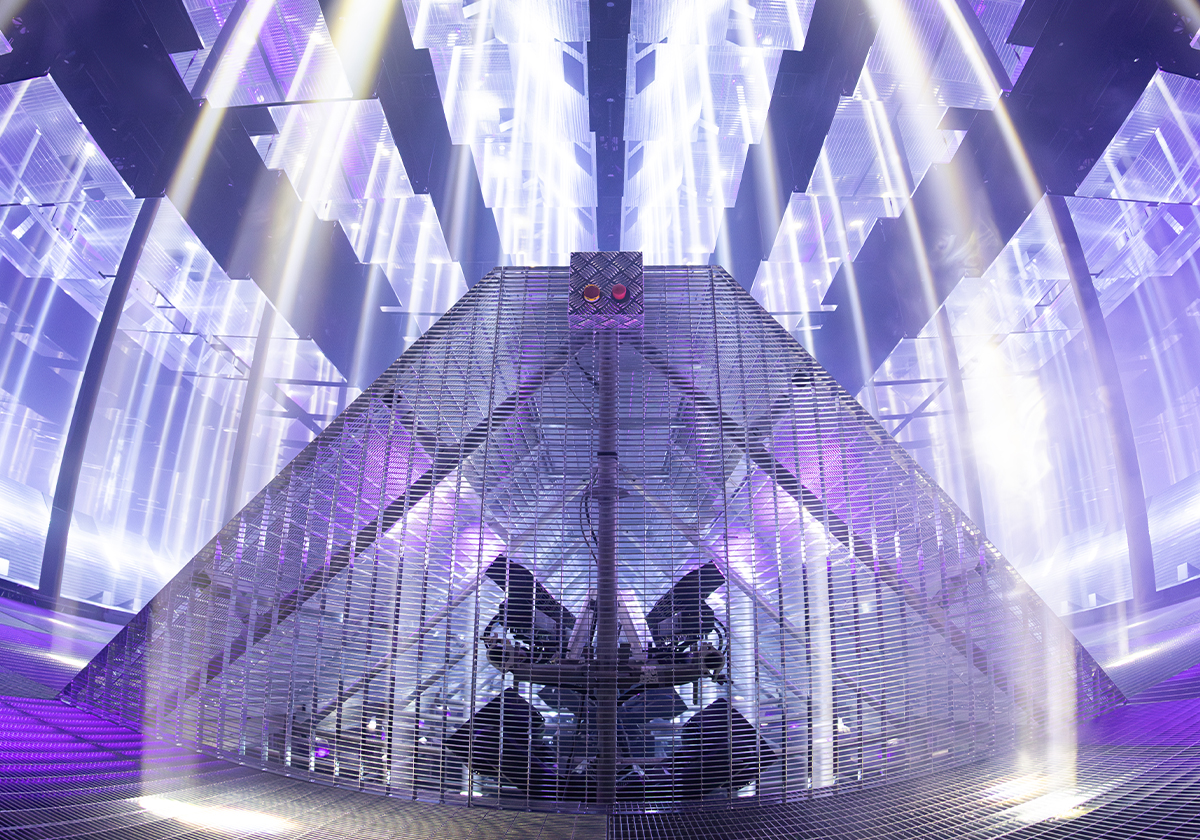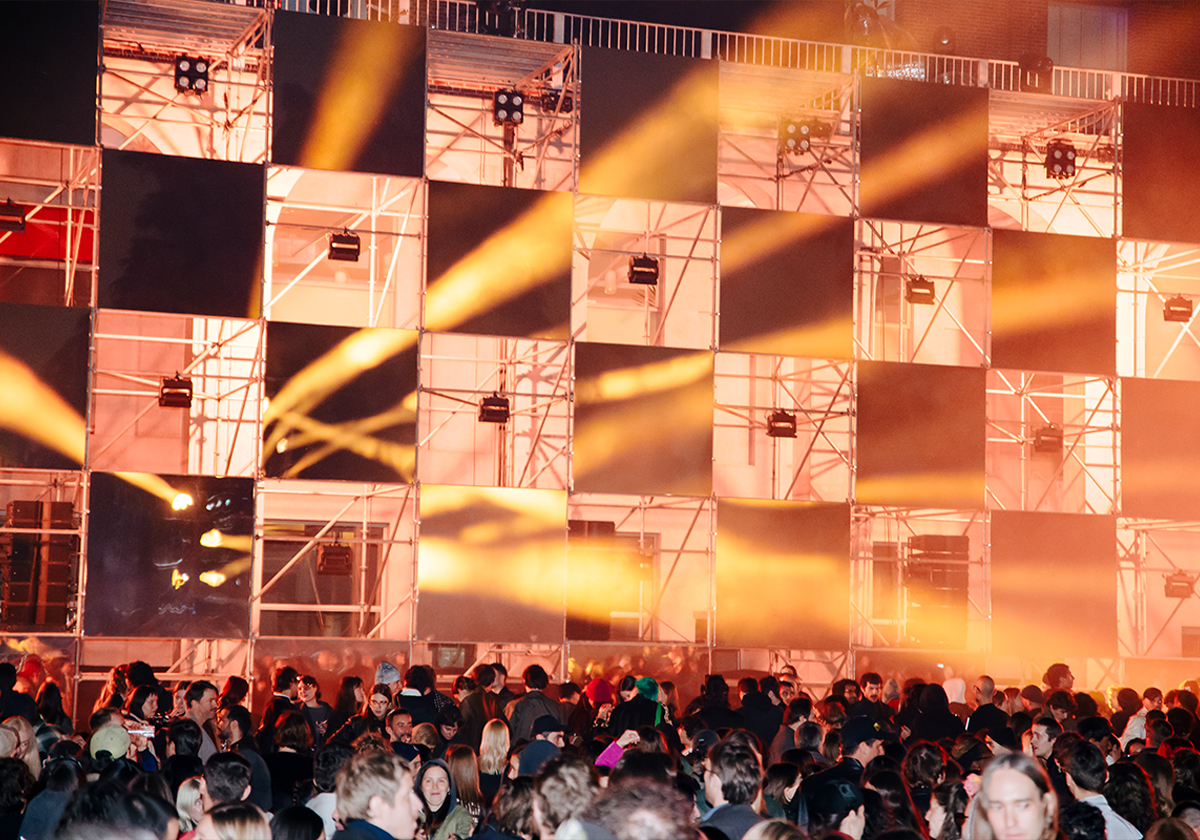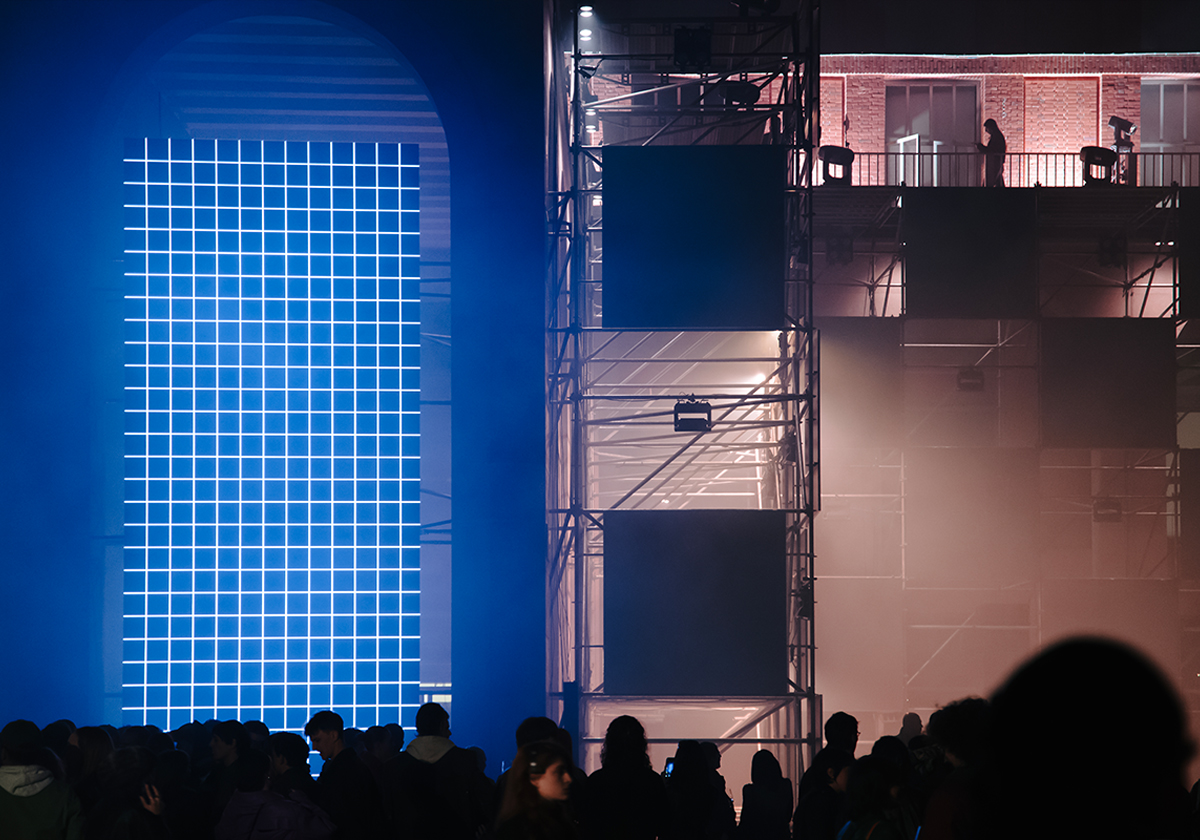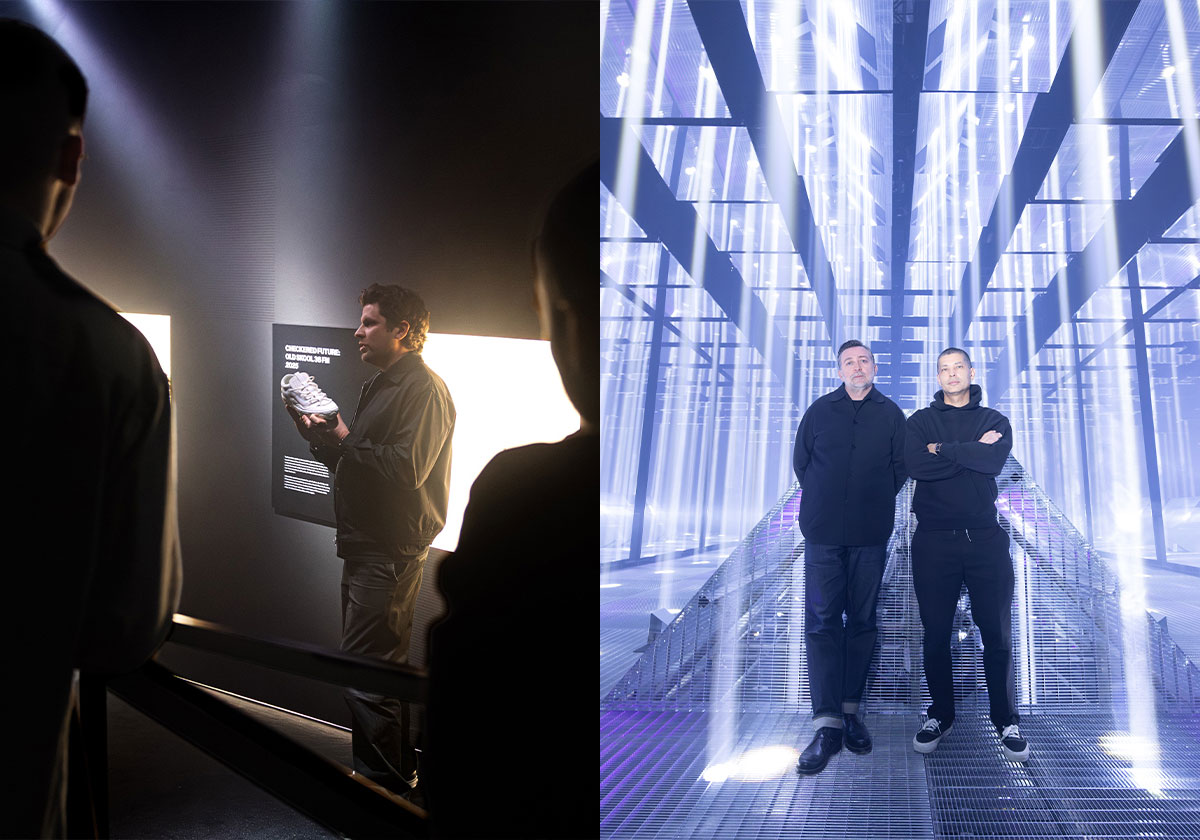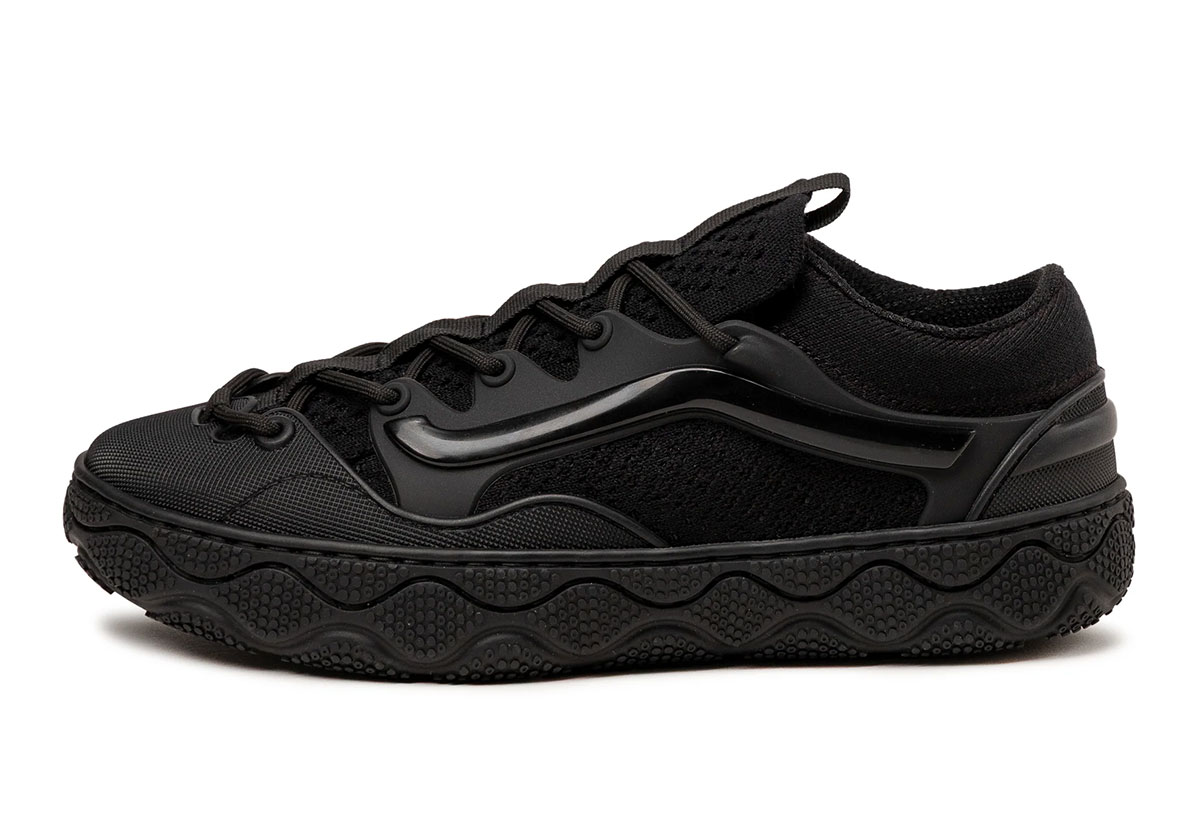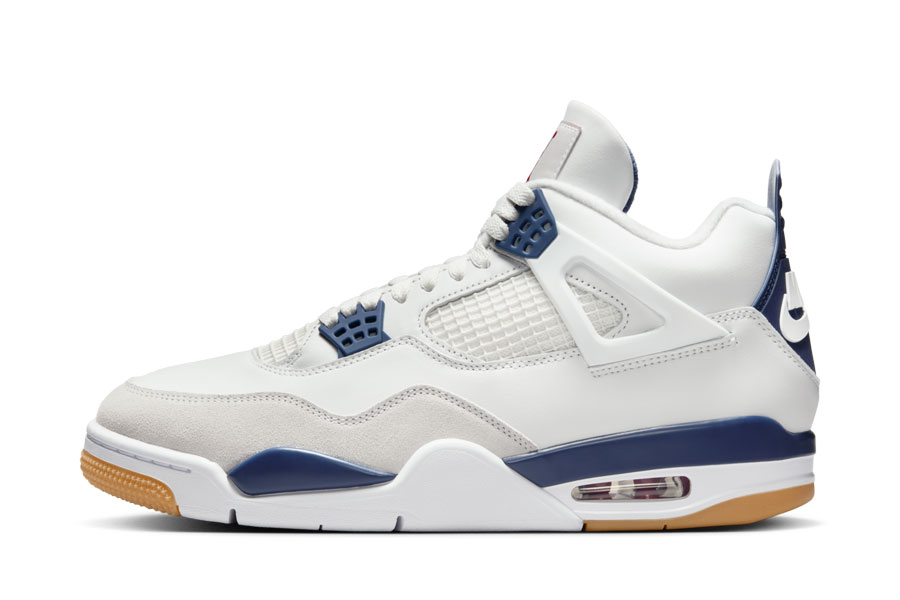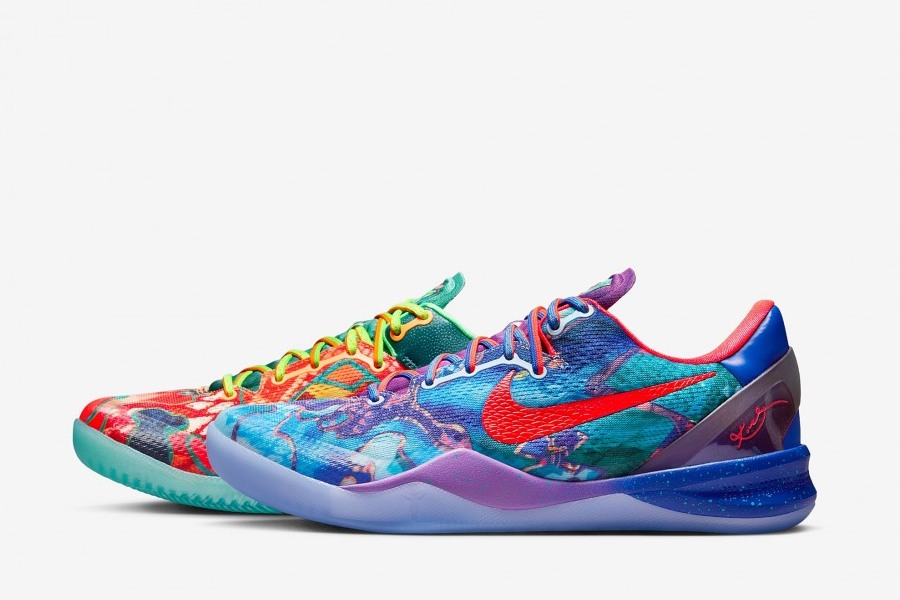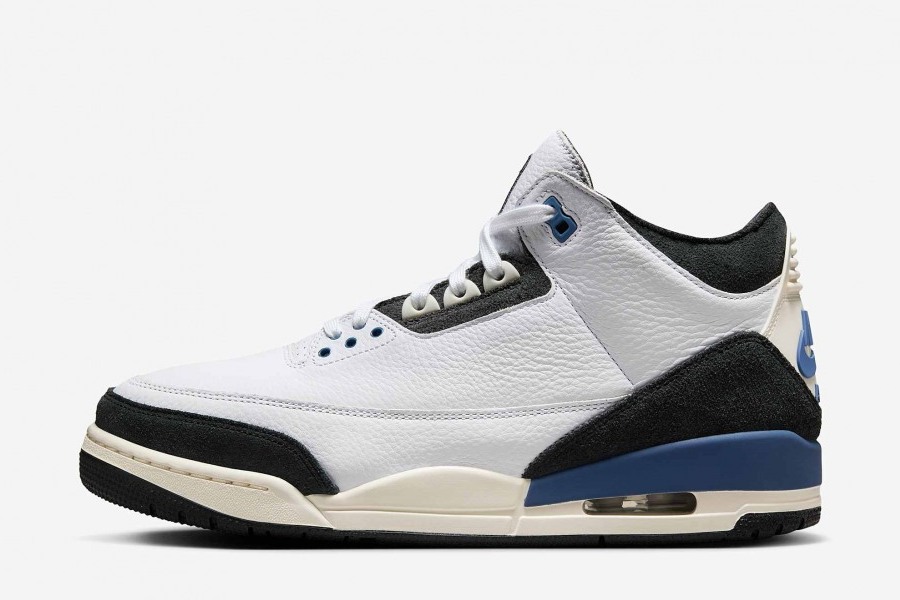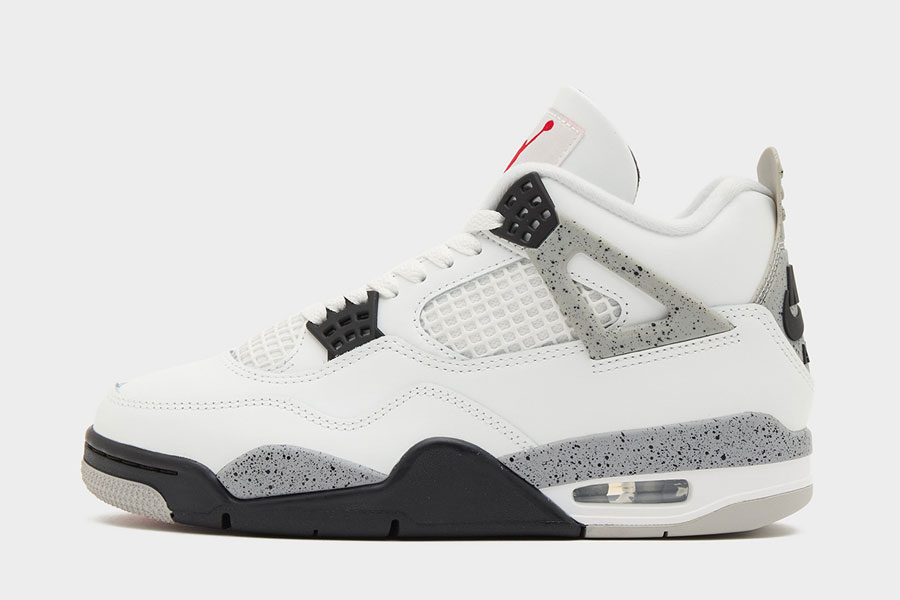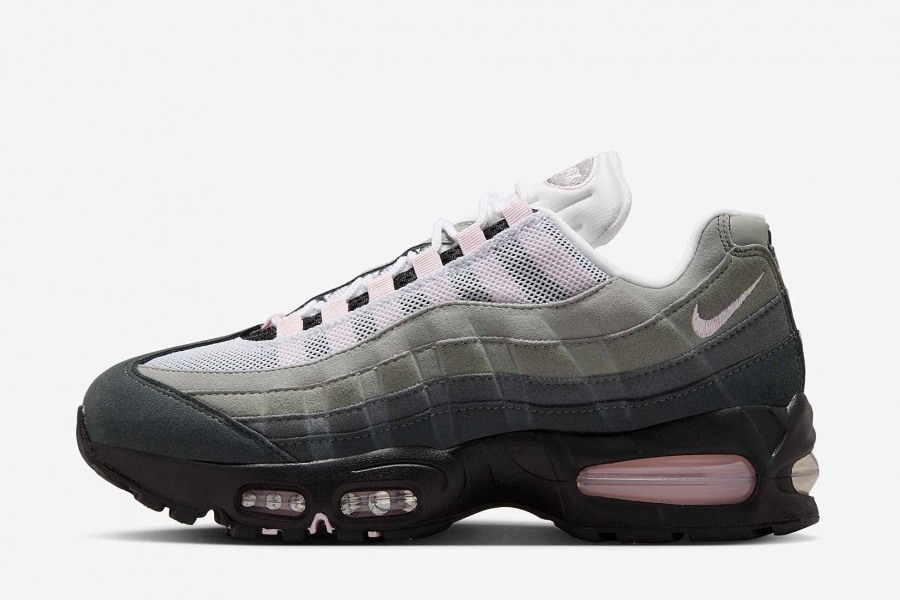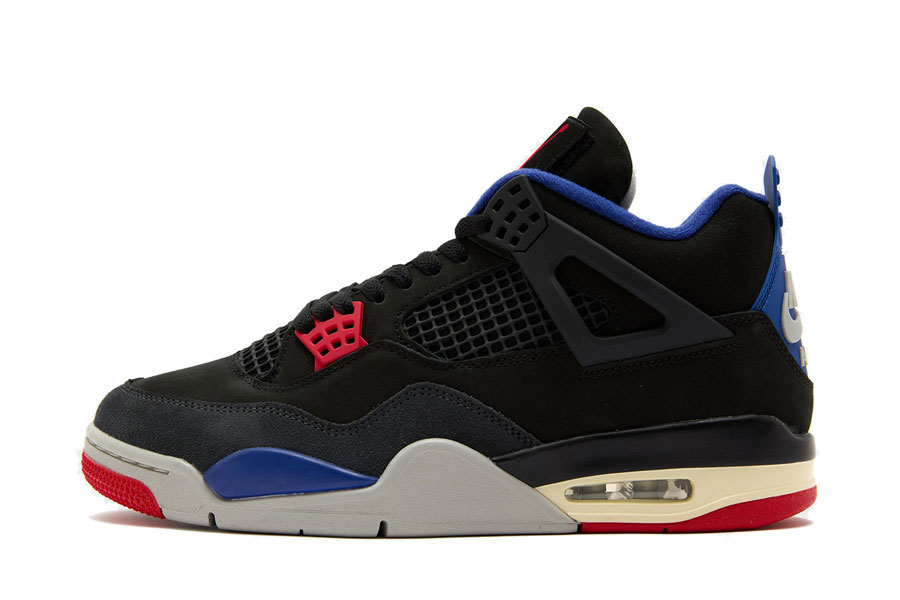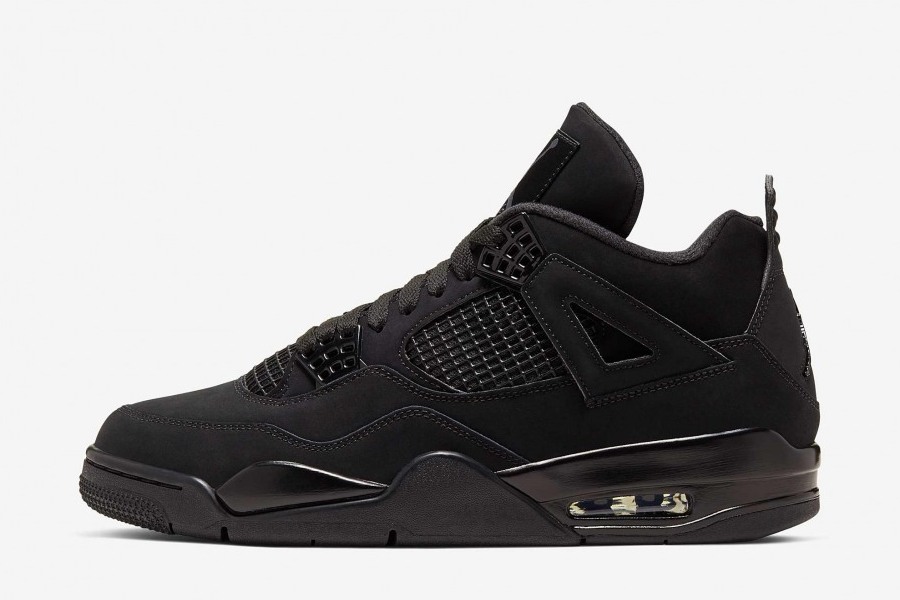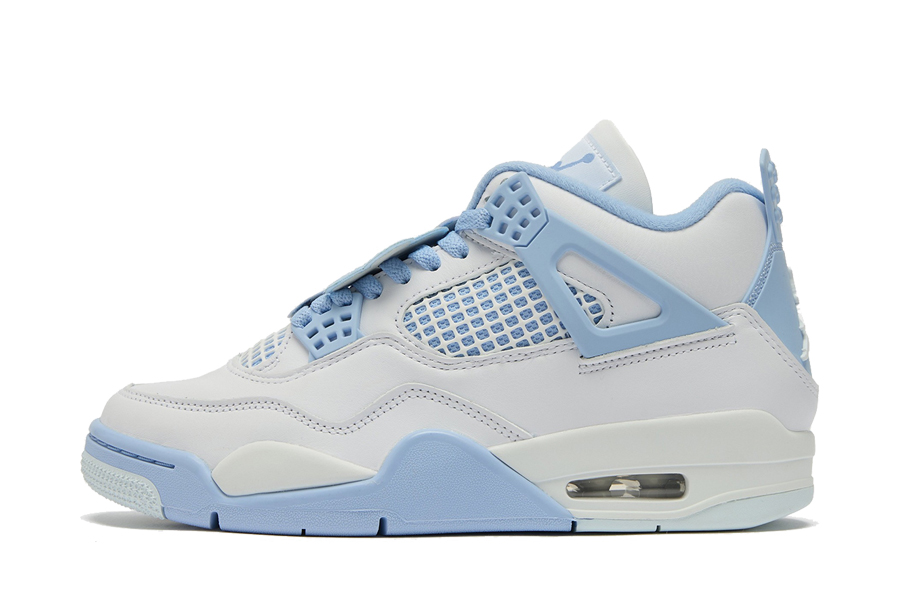Vans is no stranger to the spectacle. Already notching two worlds-collide activations in Paris as they tipped off their pinnacle OTW label, no one could’ve reasonably expected they’d lower the stakes in its next step. The California company shifted to Milan to celebrate the Old Skool 36 Future Make, both a radical new member of the catalog and the face of an innovative sub-brand under OTW.
The story of the Old Skool 36 Future Make is one of old-meets-new, revisiting the same seeds that inspired Style 36 in the first place and spinning them off for a new generation. Though suede and canvas are now a staple in footwear, in 1977, they were entirely novel inventions. Just the same, the mix of an engineered mesh upper, TPU side stripe, and Vibram traction is cutting-edge for the company, making its forward-facing hallmarks clear from first glance. Further, the brand’s connection to sound is front and center: see the sinusoidal waveforms that give the midsole its signature shape.
For those in town for the week-long Italian celebration, you had an opportunity to witness the tangible manifestation of the Future Make story: an experiential activation at Triennale Milano designed by multi-hyphenate Willo Perron. Shifting light beams bounced off reflective ceiling panels, rotating at wild angles before pulling back to tangibly change the space’s geometry, all set to experimental ambient music. They closed out the weekend by bringing warehouse vibes to that same venue, planting Bjork, Vegyn, and Evissimax in a DJ booth on top of the site’s arched rear facade.
Amid the festivities in Milan, we caught up with two principal actors for the Old Skool 36 FM: Dylan Petrenka, Footwear Design Director for OTW by Vans, and Ian Ginoza, Global Vice President and Creative Director of Pinnacle Product. In conversation with Sneaker News, the two pulled back the curtain on the wide-ranging inspirations behind the design, how the Vans archive informs where OTW is headed, and why long-time Vans devotees should be excited for what Future Make will bring to their most cherished models.
The Vans Old Skool 36 FM releases on April 11th in both black and “Marshmallow” colorways, retailing at $125 a piece. The below interview has been lightly edited for clarity.
“We kind of flipped the tables a couple of times to be like: alright, how can we make this a bit more unexpected?”
Dylan Petrenka on the design process for the Old Skool 36 FM
Matt Varga: On a personal level, what drew you to want to work with Vans in the first place? What was your relationship with the brand beforehand?
Dylan Petrenka: I grew up skateboarding in Arizona, so Half Cab was one of my first skateboarding shoes. So, it’s a pretty deep relationship with the brand on an emotional level. For the more recent history, [it was] just loving the potential at Vans and the people. I had known Ian for many years and was just eager to work with him again — the level of inspiration, the environment, and the teams he builds tend to produce a pretty creative atmosphere. Then, on a very personal level, all of my family is in the Southern California area, so [it was a chance] to be close to family and work for a brand I loved.
With the Engineered Knit series, the Vibram Half Cab, materiality has been a big focus of OTW so far. Is that something that’s in your head when you’re sitting down with a design, or is that something that comes along the way as you’re working things out?
It’s happening pretty simultaneously. We have a material designer and developer, Chloe Muller, that we work with on our team. She’s brought into the process [way] earlier than we start thinking about shoes because the lead time is so long on new materialization. We all have an earlier deadline: if you want to get new materials in for the season, you have to choose it way beforehand. So we’re mining for inspiration pretty early, and then we let that inspiration drive the exploration for new materials. We’re kind of sketching with that materialization in mind. Along the way, she’s there to be like, “well, if that doesn’t work, then try this.” Sometimes we have existing relationships with material vendors and [they’ll] explore with us and help bring the dreams to life.
“We started looking at other fields of industry… looking at hazmat boots, workwear, [anything] built to last without any aesthetic agenda.”
Dylan on the unexpected inspirations for the model
Also in the recent catalog, there’s the Super Low Pro, which comes from the Serio series. I hesitate to use the term “forgotten models,” but how often are you going back into that archive to pull inspiration from?
Catherine Acosta, our archivist, helps us curate the history; she’s got this encyclopedic knowledge in the history of Vans. Then it’s just scouring the internet — for as accurate as literature and what you can find on blogs may be, eBay is a place I end up often. The stuff you’ll find on there, it’s like “Where did this come from?” All that to say, we’re always deep in the archives throughout our creative process.
I want to get inside the Old Skool 36 Future Make — can you just take us through the process of putting the shoe together? What the starting point was, if it took any unexpected turns along the way?
At the genesis, the brief was somewhat broad. We were just trying to explore what a future-forward Old Skool would look like. The Old Skool as a model has already gone through some iterations; the Old Skool 36 has a shorter vamp than the original, it had been changed from the Style 36 way back. We were just kind of obsessing over the history of this shoe. I think we knew from the get that it wouldn’t land if it was just small tweaks. We have an OG. It’s an icon. We don’t need an “OG.whatever”. [Everything began with] really establishing those design filters of what the Old Skool story was: the birth of the side stripe, suede and canvas being an unexpected material mix in 1977.
Then we started looking at other fields of industry for the story of durability. Looking at hazmat boots, workwear, and products that were built directly to last without any aesthetic agenda. Our team (footwear designer Matt Lim & material designer Chloe Muller) began to brainstorm and add to an inspiration board before starting to distill it down.
The first couple designs still very much had the Old Skool intact. We kind of flipped the tables a couple of times to be like: “Alright, how can we make this a bit more unexpected?” From there, it moved pretty quickly toward the design lines that you’re seeing today, but even within that, it was a process. The TPU was originally maybe an embossed leather, the lace shroud changed throughout. I’m sure many of the shoes you’ve seen where there’s a lot of molded components on the shoe; it takes a while for it to look good. You have to kind of shelter people from early samples as that all comes together. The potential’s there — “once that molded component gets opened, once it all comes together, then we’re going to have something here.” You have to stay focused on what we’re trying to accomplish before broadcasting it out.
“It’s someone that would be willing to take a style risk, someone that was hungry for something new.”
Dylan on the target audience for Future Make
Are there any other aspects of the Old Skool 36 FM that you’re particularly excited about?
The layered comfort. We built an architecture on the inside of the cup sole that starts with firm cushioning. Above that, there’s an EVA Strobel, a thin layered foam, then above that is the insole. There’s also the shoe being built for disassembly. Finding a new way to build the cup sole let us land on a design that empowers the consumer to have that choice at the end of its life.
I’m sure you want this to connect with as wide a demographic as possible, but is there one specific kind of person you feel the Old Skool 36 will resonate the most with?
We were focused on someone willing to take a style risk, someone who was hungry for something new. Vans is a brand that has a very important past that a lot of consumers are familiar with; they grew up with the brand. So we had to respect that history, but we also could draw from reactions to the Low Pro. Once audiences got a little taste of that newness and responded positively, that’s where we could draw confidence. Now, let’s truly bring something different.
“That Off the Wall spirit was already at the center of who Vans is… it’s [what] skateboarding is all about.”
Ian on where Vans OTW stems from
You’ve obviously had a lot of notable stops over your career — what has made this experience with Vans so unique? What are some of the new challenges that working with Vans and OTW have opened up?
Ian Ginoza: I hate to sound hokey, but Vans, to me, is almost a return. I’m a kid from Hawaii. I grew up in flip-flops and barefoot on the beach. So my first shoes that I wore were Vans, because skateboarding is what brought me into footwear. Coming to Vans was a very personal moment for me.
I think we’ve been able to recontextualize and give a new perspective on Vans. That Off the Wall spirit was already at the center of who Vans is, so OTW is the pinnacle expression of that: taking risks, being exploratory, challenging old conventions in search of new and better ones. It’s also what skateboarding is all about — it’s evolved considerably since its genesis, and OTW is aiming to be in lockstep with that.
I’m glad you bring up the “OTW Spirit.” Some fans of the brand have cited Vans Vault as sort of a predecessor to Off the Wall. I’m curious if you share that perspective, and in your mind what distinguishes one from the other.
I love Vans Vault, it has a massive legacy of almost 20 years. What it was tasked to do was celebrate the history of Vans — the difference is OTW has a complete respect and reverence for our history, but it’s about taking into into a new day. Being contemporary, and progressive, and innovative.
“If I can get to a place without you, I don’t really need you.”
Ian on what makes for an authentic collaboration
Collaborations have played a pretty big part in the OTW story so far. Are there specific attributes you’re looking for in the people you’re bringing in? Or is it a more holistic approach?
At the end of the day, a lot of it has to do with the values of those partnerships. It’s about two entities or two individuals that come together to realize a new space. All of our best partnerships are symbiotic in that way because if I can get to a place without you, I don’t really need you. If together, we can come together to realize something we couldn’t on our own, that’s when the best stuff comes about.
You take Sterling Ruby, for instance. Being a former pro skater and a trailblazer within art are both at the center of who he is. It’s that kind of unique perspective that we’re looking at it with. Skateboarders, in a lot of ways, can see the invisible; most will walk past a swimming pool and see just one thing, but skateboarders see a million and one places they can take it. I’m looking for individuals or entities that have that kind of perspective.
Conversely, what sets Future Make apart from what OTW has accomplished so far?
Future Make is a place to reimagine. I look at it much the same way as the automobile industry looks at concept cars. It’s about taking legacy franchises and lending this “what if,” “what it could be” quality. The Old Skool happens to be the first icon that was put forth into Future Make, but in subsequent seasons and years you’ll see our other icons go through the same filter.
Are there any other pieces of the Old Skool 36 FM that the consumer should be paying attention to?
A big part of Vans is the connection to music and the culture of music. That led us to sound: the signatures, the architecture, the visualization through waveforms, frequencies, and sonic vibrations. All of that visual language went on to inform the design focus and how we approached this shoe.
The Vans Old Skool 36 Future Make will release on April 11th, 2025 for $125.


